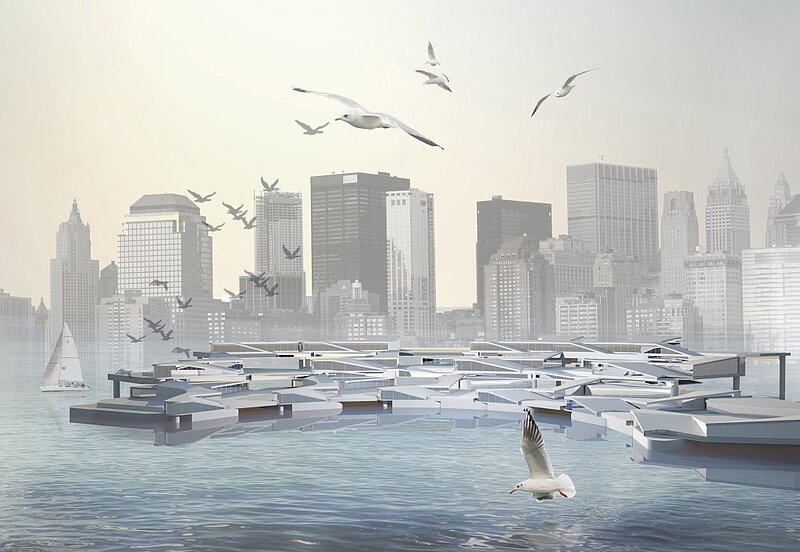Archaeologies of the future Lower Manhattan 2100, a Transformable Architecture
- Year2015
- LocationManhattan
On the basis of the precedent research and studies, the proposal is to challenge today's fixed architecture through envision and speculate a transformable floating architecture in the future - it can fully adapt to the water dynamic conditions through transforming its form and function to accommodate climate resilience and different modes of inhabitation.
Among the most vulnerable global cities in the world, the west and East Lower Manhattan will be taken as the test sites to examine two typical urban coastal conditions.
On the west site, the high-rise buildings along the coastal line will be retained and protected. In the extreme weather event, the floating structure protects the existing buildings by transferring to link the podiums and become second elevated urban ground and break water. In the normal benign condition, it extends onto water to become multiple platforms that accommodate recreation and cultural events.
On the east site where low-rise buildings will be more likely to be rebuilt and the site is re-zoned into land, amphibian, and water zone where modular floating units form the porous edge based on the projected water levels of sea level rise, storm surge, and mean high tide. Driving my tidal energy, the floating units transfer to accommodate different climate conditions and different modes of inhabitation.








